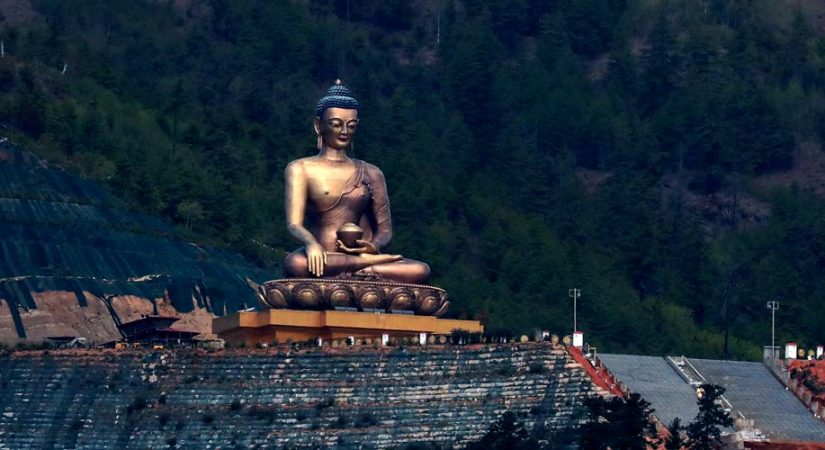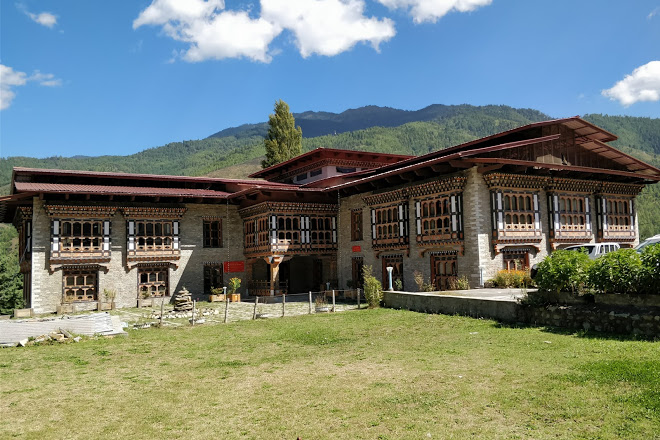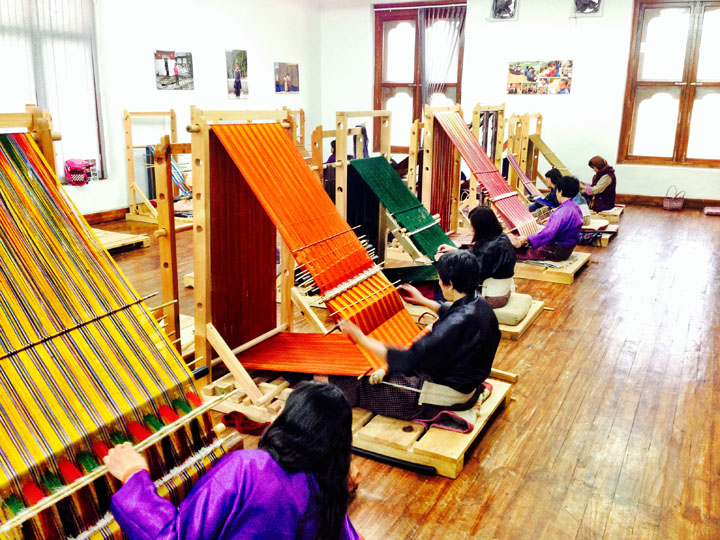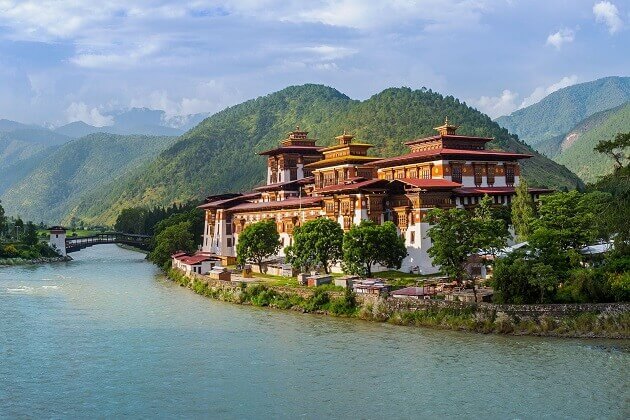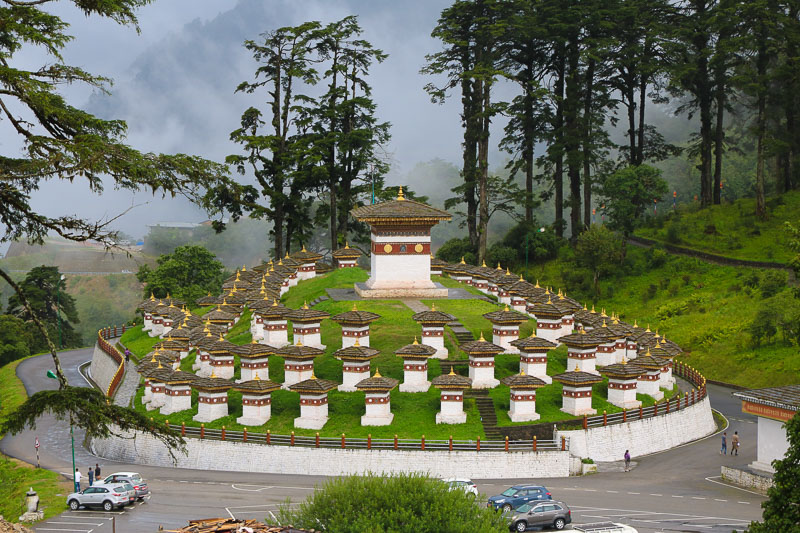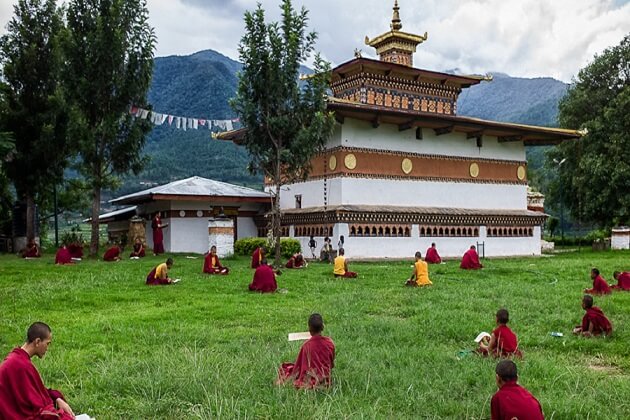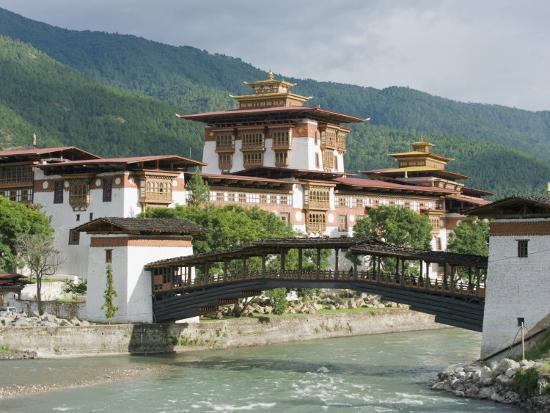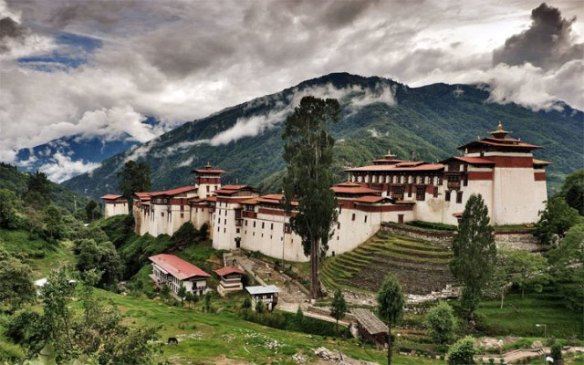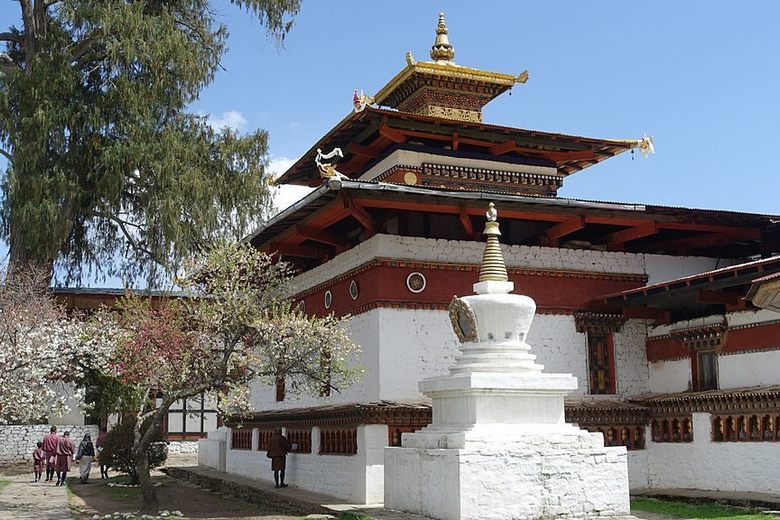Embark on a captivating journey through the enchanting landscapes and cultural treasures of Bhutan.
Tour Overview
The tour begins with your arrival in Paro, offering breathtaking mountain views during your flight. Experience the vibrant heart of Bhutan as you explore Thimphu, the capital city, where you’ll visit significant landmarks like the National Memorial Chorten and the majestic Tashichho Dzong. Immerse yourself in Bhutanese heritage at the National Library and the Institute for Zorig Chusum.
Witness the iconic Takin Sanctuary and explore the vibrant markets for local crafts. Traverse to Punakha, where you’ll be enthralled by Punakha Dzong’s rich history and marvel at the fertility-themed Chimi Lhakhang. In Paro, a highlight awaits as you hike to the spectacular Taktsang Lhakhang, perched on a cliff. Delve into Bhutan’s ancient monastic culture, and soak in the serene beauty of Kyichu Lhakhang. Your journey concludes in Paro, leaving you with cherished memories of Bhutan’s natural wonders and cultural riches.
Destinations Covered
Paro: Begin your journey in Paro, where the breathtaking flight offers sweeping views of majestic peaks like Everest and Chomolhari. Immerse yourself in the cool, fresh air and explore the historic Rinpung Dzong and the captivating Ta Dzong, home to Bhutan’s National Museum. The iconic Taktsang Lhakhang, or Tiger’s Nest Monastery, perched dramatically on a cliff, promises an unforgettable hike amidst stunning vistas.
Thimphu: The capital city welcomes you with a blend of modernity and tradition. Visit the National Memorial Chorten, an emblem of peace, and explore Tashichho Dzong’s grandeur. Delve into Bhutan’s artistic heritage at the National Library and witness the exquisite craftsmanship at the Institute for Zorig Chusum. The bustling local markets offer a glimpse into the vibrant culture and traditions.
Punakha: Journey to Punakha, a valley of natural splendor. Marvel at the majestic Punakha Dzong, a stunning architectural masterpiece, and venture to the fertility-themed Chimi Lhakhang, a temple associated with the “Divine Madman.” The journey through Punakha is a captivating blend of history, spirituality, and natural beauty.
Dochu-la Pass: A scenic drive to Dochu-la Pass treats you to panoramic views of the Himalayas, with peaks like Masagang and Gangkar Puensum dominating the skyline. The pass is adorned with prayer flags and chortens, adding a spiritual dimension to the breathtaking landscapes.
Paro Valley: Return to Paro and explore Simtokha Dzong, Bhutan’s oldest fortress. The historic Rinpung Dzong offers insights into Bhutan’s past, and the town’s charming ambiance provides a perfect backdrop for further exploration.
Kyichu Lhakhang: A visit to Kyichu Lhakhang, one of Bhutan’s oldest monasteries, unveils the roots of Buddhism in the region. The serene surroundings and ancient architecture create a profound sense of spirituality.
Each destination on this tour reveals a unique facet of Bhutan, from its rich history and cultural heritage to its stunning natural landscapes, leaving you with a deep appreciation for this remarkable Himalayan kingdom.
Detailed Tour Plan
DAY 01 Arrive Paro – Thimphu (-/L/D)
The flight to Paro on a clear day is one of the most spectacular of all mountain flights. One can see Mt. Everest, Kanchenjunga, Makalu and other peaks in Bhutan such as Chomolhari, Jichu Drake and Tsering ghang. The first gift from Bhutan will be cool, clean fresh air as you step out of the aircraft. You will be received by our representative and transfer to Thimphu. On arrival in Thimphu, check into the hotel.
Afternoon, proceed to visit National Memorial Chorten: a monument for world peace and prosperity. The paintings and statues inside the monument provide a deep insight into Buddhist philosophy.
Later visit Tashichho Dzong (opens until 4 pm): This impressive fortress/monastery houses Secretariat building, the throne room of His Majesty, the King and various government offices. It is also the summer residence of Chief Abbot and central monk body.
Afterwards, drive to Buddha Point (Kuenselphodrang). You can pay your obeisance and offer prayers to the Buddha, the largest statue in the country and then walk around and take a glimpse of the valley. Overnight at hotel.
Day 02 Thimphu (B/L/D)
Morning after breakfast sightseeing visit National Library, which holds a vast collection of ancient Buddhist texts and manuscripts, some dating back several hundred years, as well as modern academic books mainly on Himalayan culture and religion: (Closed on Weekends).
Also visit nearby Institute for Zorig Chusum: Commonly known as Arts & Crafts School or Painting School (closed on Sat, Sun & Government Holidays), the Institute offers a six-year course on the 13 traditional arts and crafts of Bhutan. On a visit, one can see students learning the various skills taught at the school.
Textile Museum: With the opening of Textile Museum, Bhutanese textile have reached new heights as one of the most visible distinct art form. (Closed on Sundays).
In the afternoon in Thimphu visit Changangkha Lhakhang: It is a fortress like temple and monastic school perched on a ridge above Thimphu, south of Motithang. The temple was established in 12th century on a site chosen by Lama Phajo Drugom Shigpo, who came from Tibet. The central statue here is Chenrezig in a manifestation with 11 heads. From temple courtyard, there is fascinating view of Thimphu valley.
Takin Sanctuary: The Takin is the national animal of Bhutan, and looks like a cross between a cow and a goat. Legend has it that the animal was created by the great Buddhist yogi, Drupa Kunley, and it can be found only in Bhutan and nearby areas. Taxonomists place the animal in a category of its own as it is not similar enough to any other animal to fit established categories.
Then, visit the government-run Handicrafts Emporium and local crafts bazaar, to browse through example of Bhutan’s fine traditional arts. Here you can buy hand-woven textiles, thangka paintings, masks, ceramics, slate and wood carvings, jewelry, interesting items made from local materials.
Overnight at hotel.
Day 03 Thimphu – Punakha (B/L/D)
After breakfast drive up to Dochu-la pass (3,088m/ 10,130 ft) stopping briefly here to take in the view and admire the chorten, mani wall, and prayer flags which decorate the highest point on the road.
If skies are clear, the following peaks can be seen from this pass (left to right): Masagang (7,158m), Tsendagang (6,960m), Terigang (7,060m), Jejegangphugang (7,158 m ), Kangphugang (7,170 m ), Zongphugang (7, 060 m ), a table mountain that dominates the isolated region of Lunana – finally Gangkar puensum, the highest peak in Bhutan at 7,497m.
En route take a short excursion to Chimi Lhakhang : situated on a hillock in the centre of the valley, is dedicated to Lama Drukpa Kuenley, who in the late 15th century used humor, songs and outrageous behavior to dramatize his teachings and due to this also known as ‘Divine Madman’. This temple is also known as the temple of fertility. It is widely believed that couples who do not have children and wanting one, if they pray at this temple, they are usually blessed with a child very soon. It is about 30 minute walk across field from the road to the temple. The trail leads across rice fields to the tiny settlement of Pana, meaning ‘field’. It then follows a tiny stream downhill to Yoaka and across more fields before making a short climb to Chimi Lhakhang.
Later visit Punakha Dzong: Built strategically at the junction of Pho Chhu and Mo Chhu rivers in 1637 by Shabdrung Ngawang Namgyal to serve as the religious and administrative centre of the region, Punakha Dzong has played an important role in Bhutan’s history. Damaged by four catastrophic fires and an earthquake, the Dzong has been fully restored by the present King.
Overnight at hotel.
Day 04 Punakha / Paro (B/L/D)
Morning after breakfast drive to Paro: En-route visit Simtokha Dzong. This Dzong, built in 1627 is the oldest in Bhutan. It now houses the Institute for Language and Culture Studies.
In the afternoon in Paro visit Ta Dzong (CLOSED ON GOVT HOLIDAYS): once a watchtower, built to defend Rinpung Dzong during inter-valley wars of the 17th century, Ta Dzong was inaugurated as Bhutan’s National Museum in 1968. It holds fascinating collection of art, relics, religious thangkha paintings and Bhutan’s exquisite postage stamps. The museum circular shape augments its varied collection displayed over several floors.
Afterwards, walk down a hillside trail to visit Rinpung Dzong, which has a long and fascinating history. Built in 1646 by Shabdrung Ngawang Namgyal, the first spiritual and temporal ruler of Bhutan, the Dzong houses the monastic body of Paro, the office of the Dzongda (district administrative head) and Thrimpon (judge) of Paro district. The approach to the Dzong is through a traditional covered bridge called Nemi Zam. A walk through the bridge, over a stone inlaid path, offers a good view of the architectural wonder of the Dzong as well as life around it. It is also the venue of Paro Tshechu, held once a year in the spring. Overnight at the hotel in Paro. (Altitude 2200m).
Overnight at hotel.
Day 05: Paro (B/L/D)
Morning excursion to Taktsang Lhakhang (approx. 5 hrs. walking excursion): perched on the side of a cliff 900m above the Paro Valley floor, it is undoubtedly one of the most famous of Bhutan’s monasteries.
Lore has it that Guru Rinpoche arrived here on the back of a tigress and meditated at this monastery thus the name ‘Tiger’s Nest’. This site has been recognized as a most sacred place and visited by Shabdrung Ngawang Namgyal in 1646 and now visited by all Bhutanese at least once in their lifetime. On 19 April, 1998, a fire severely damaged the main structure of building but now this Bhutanese jewel has been restored to its original splendor.
On the drive towards Paro town en route visiting Kyichu Lhakhang, one of the oldest monasteries of the Kingdom reflecting introduction of Buddhism in Bhutan. Overnight at the hotel in Paro.
Overnight at hotel.
Day 06: Depart Paro (B/-/-)
After early breakfast at the hotel, drive to the airport for flight to your onward destination. Our representative will help you with exit formalities and then bid you farewell.
End of Tour
FAQs about the Tour
Q: How do I reach Bhutan for this tour?
A: You will arrive at Paro Airport, which offers a spectacular mountain flight showcasing peaks like Everest and Chomolhari.
Q: What is the significance of Taktsang Lhakhang, or Tiger’s Nest Monastery?
A: Taktsang Lhakhang is a sacred monastery perched on a cliffside. It holds deep spiritual importance and is a must-visit destination, offering a rewarding hike and breathtaking views.
Q: What cultural attractions can I explore in Thimphu?
A: Thimphu boasts the National Memorial Chorten, Tashichho Dzong, and the National Library, where you can delve into Bhutan’s history, religion, and artistic heritage.
Q: What makes Punakha a special destination?
A: Punakha is known for its majestic Punakha Dzong and the fertility-themed Chimi Lhakhang. It offers a blend of history, spirituality, and captivating natural beauty.
Q: What is Dochula Pass known for?
A: Dochula Pass is renowned for its breathtaking views of the Himalayas, including peaks like Masagang and Gangkar Puensum. It’s a serene spot adorned with prayer flags and chortens.
Q: How can I experience Bhutan’s artistic heritage?
A: The Institute for Zorig Chusum in Thimphu offers insights into traditional Bhutanese crafts and arts, allowing you to witness students learning these skills.
Q: What can I explore in Paro Valley?
A: Paro Valley offers historic sites like Rinpung Dzong and Kyichu Lhakhang, showcasing Bhutan’s ancient monastic culture and spiritual roots.
Q: How challenging is the hike to Taktsang Lhakhang?
A: The hike to Taktsang Lhakhang is approximately 5 hours and is of moderate difficulty. It rewards hikers with stunning views and a deep sense of accomplishment.
Q: Is there leisure time included in the tour?
A: Yes, the tour includes leisure time for exploration, relaxation, and immersing yourself in the local culture and surroundings.
Q: What is the best time to embark on this Bhutan tour?
A: The best time to visit Bhutan is during the spring (March to May) and fall (September to November) months when the weather is favorable for outdoor activities and sightseeing, and the natural beauty is at its peak.
Inclusions
-
- Accommodation in sharing twin as per the itinerary.
- All meals as per the itinerary.
- All transfers and sightseeing as per your itinerary
- Services of an accompanied English speaking guide.
- Entrance fees – for single visit only.
- Govt. Royalty and taxes.
Get a Quote: Call/Whatsapp: +91 9810954649 or Fill Contact Form




